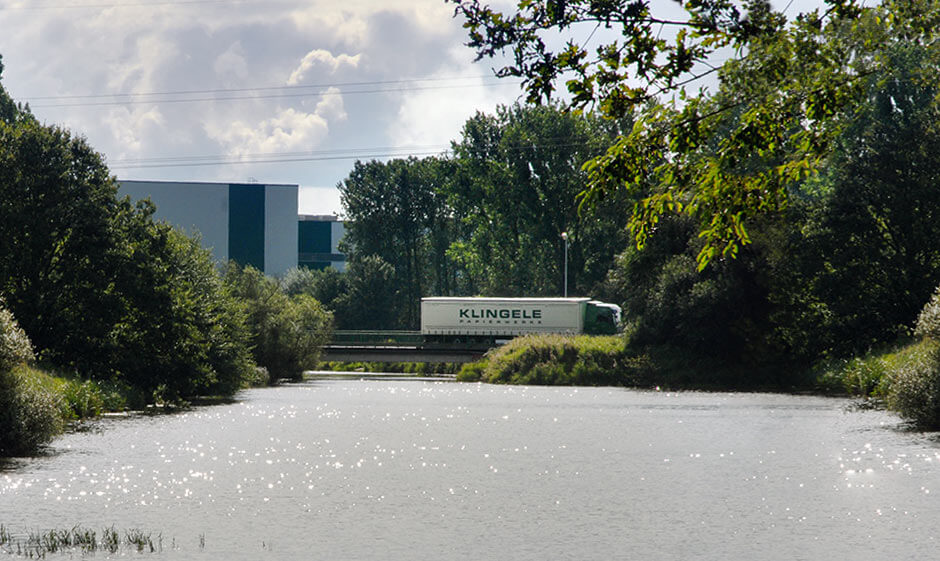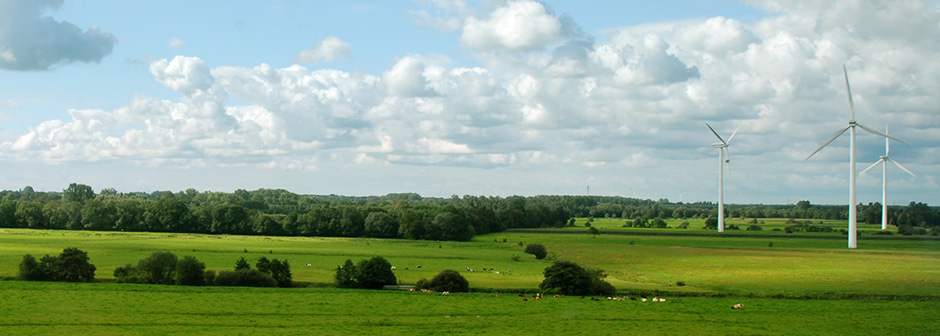Sustainable
paper production

* Pflichtfelder
Diese Angaben sind zur Anmeldung zum Newsletter "Packendes" notwendig.

Sustainability is a core element of our corporate strategy. We have therefore designed the production of our corrugated base paper to make it as resource-saving and energy-efficient as possible. Our measures include investment in renewable energy sources as well as strict energy management within our plants, careful use of natural resources and use of state-of the-art machinery.
Our sustainability strategy extends well beyond the manufacturing of our products and is also applied to upstream and downstream processes. This begins with the procurement of environmentally-friendly materials and ends with efficient logistics, avoiding empty runs and ensuring optimum use of freight capacity.
We use 100% waste paper for our corrugated base paper, which we clean in a complex procedure before processing. In addition, our paper mills are also certified with the FSC® Recycling Seal (C118465; C017777; C043075). This is our guarantee that the raw materials used are secondary raw materials - with a traceable origin.
We process nearly 300,000 tons of waste paper per year. We use local commercial and industrial sources. With the collaboration of the neighbouring communities, the waste management sector and the waste paper trade, we procure around 35,000 tons a year (around 12%) from the neighbouring communities. This protects the environment, keeps transport routes short and eases congestion on the roads.


We only use starch to enhance the paper strength. We do not use any synthetic dry strength agents that have to be added to the paper in large volumes to comply with the strength specifications. This protects the environment and the oil reserves and increases the recyclability of the packaging and folding boxes made from waste paper. The water circuits and therefore also the waste water treatment plants at the paper mills are not contaminated unnecessarily by synthetic polymers!
Water is a vital resource for paper production. Our state-of-the-art treatment plant purifies wastewater biologically in a two-stage process. So-called anaerobic digesters are converted into biogas by organic matter in the water . A combined heat and power plant then burns this gas, producing electricity and heat that are used in turn in our paper mills, thus completing the cycle.


Our paper mills are genuine recycling plants: waste paper makes up 100 percent of the primary resource and raw material for production. However, production itself is also organised according to the principles of closed loop recycling management: waste material generated at paper machines is recycled and reintroduced into the production process.
Our logistics system guarantees short distances and optimum freight capacity. This applies to the planning of transport routes between our own production sites and to our supplier management. Our paper mill in Weener, for example, is primarily supplied with waste paper from two local districts, and long-term delivery contracts guarantee sustainability. Regional proximity to our suppliers shortens transport routes and reduces road traffic.
We supply corrugated base paper to our southern plants from our Blue Paper paper mill - and use the return freight to transport waste paper from these plants to Blue Paper. This completes the cycle again - and is another reduction in our carbon footprint.


Use of renewable energy sources and non-recyclable production waste form the central pillars of the energy concept in place in our production sites. The best example is our paper mill in Weener, which is supplied with heat and electricity by its own power plant that runs on refuse-derived fuel (RDF).
Paper production consumes a lot of energy, so we established our own refuse-derived fuel (RDF) power plant at the Weener site, Weener Energie. Since mid 2008, Weener Energie has supplied all the thermal energy required for paper drying. Refuse-derived fuel is mainly procured locally - reducing transport costs and CO2 emissions. Weener Energie in turn is fuelled with waste material from our paper mill.
Our paper mill is also supplied with additional energy from renewable sources around the plant. This includes our company-owned wind turbine, which supplies an output of 3 MW after repowering in 2015. The electricity generated is fed into the public grid. Thanks to this energy concept, we not only protect the environment and our budget but also secure our long-term independence from international energy markets.


Approximately 850,000 tons of steam are required annually by our paper mills in Weener and Strasbourg. 66 percent of this is generated by incinerating biomass and non-recyclable waste. At the Blue Paper mill, more than 40 percent of the steam required for production comes from biomass.
Excess heat from the paper drying is fed through a district heating pipeline to heat the municipal outdoor swimming pool. This saves considerable amounts of gas and the outdoor swimming pool can open 4 weeks earlier and stay open for 4 weeks longer.